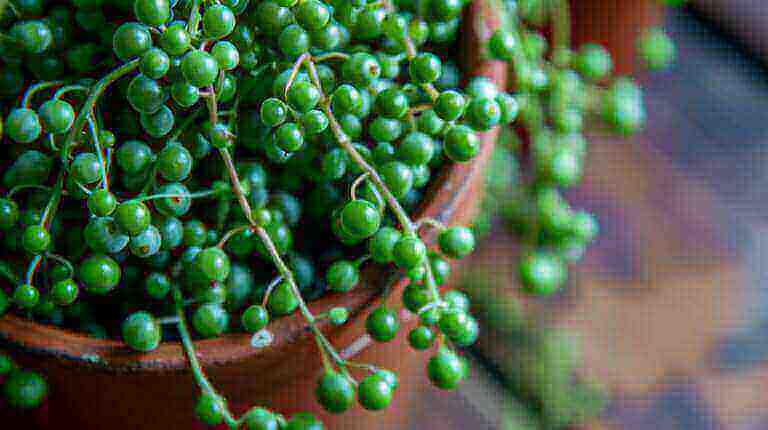Common Reasons Fiddle Leaf Fig Leaves Are Dropping? What To Do About Fiddle Leaf Fig Is Dropping Leaves
Fiddle leaf fig plant, also known as Ficus lyrata, are beloved indoor houseplants admired for their large, glossy leaves. However, it’s not uncommon for these leaves to start dropping, leaving plant owners wondering if they will grow back. The good news is that fiddle leaf fig leaves can indeed regrow, but it’s important to understand the reasons behind leaf loss and how to care for your plant to encourage new leaf growth.
Key Takeaways:
- Fiddle leaf fig leaves can grow back, but it takes time for new growth to occur
- Common causes of leaf drop include underwatering, overwatering, and exposure to direct sunlight
- To encourage new leaf growth, provide proper watering, light, humidity, fertilizer, and consider repotting
- Signs of a healthy fiddle leaf fig include new growth and glossy, vibrant leaves
- In severe cases of leaf loss, root rot, or bacterial infections, starting over with a new tree may be necessary
Common Causes of Leaf Drop in Fiddle Leaf Fig
Leaf drop in fiddle leaf fig can be attributed to several factors. Understanding these common causes of leaf drop can help you identify and address the issue affecting your fiddle leaf fig.
Here are some common causes of leaf drop in fiddle leaf fig:
- Overwatering – Excess moisture leads to root rot, which causes leaves to yellow and drop. Allow soil to partially dry out between waterings.
- Underwatering – Lack of water causes leaves to turn brown, wilt, and fall off. Water thoroughly when top few inches of soil become dry.
- Improper drainage – Soggy soil from poor drainage damages roots and encourages leaf drop. Repot in a container with drainage holes using well-draining soil.
- Low humidity – Dry air causes leaf tips and margins to turn brown. Maintain 40-60% humidity. Group with other plants or use a humidifier.
- Insufficient light – Low light leads to sparse foliage and leaf loss. Provide bright, indirect light near an east or west window.
- Repotting stress – Leaf loss can occur after repotting. Give time to recover in the weeks following transplanting.
- Pests – Insects like spider mites can infest leaves, causing stippling or spotting. Inspect and treat any infestations.
- Temperature extremes – Exposure to very cold or very hot air may shock the plant, resulting in leaf drop. Keep in ideal range of 60-80°F.
- Chemical toxicity – Leaf burn or leaf loss can result from tap water high in salts, fluoride, or chlorine. Use filtered or distilled water.
By identifying and correcting the underlying issue, you can troubleshoot leaf drop and maintain a lush, healthy fiddle leaf fig.
Tips to Encourage New Leaf Growth in Fiddle Leaf Fig
If you want to promote new leaf growth in your fiddle leaf fig, there are several key factors to consider. By providing the right conditions, you can encourage your plant to produce healthy new leaves. Here are some tips:
Here are some tips to encourage new leaf growth in Fiddle Leaf Fig:
Watering: Overwatering or underwatering can cause your fiddle leaf fig to drop leaves. The amount of water your plant needs can depend on the pot size, the size of the plant, and the environment. A common reason for leaf drop is too much water. Wait until the top two inches of soil are dry before watering your plant again.
Light: Fiddle leaf figs prefer bright, indirect sunlight. Direct sun can cause the leaves to develop brown spots. If your plant is dropping its leaves, consider moving it to a location with more light.
Humidity: Fiddle leaf figs prefer high humidity. If the air is too dry, it can cause the leaves to droop and turn yellow. Consider using a humidifier or placing your plant on a tray of pebbles filled with water to increase humidity.
Fertilizer: During the growing season, use a balanced fertilizer to provide the necessary nutrients for new growth. Be careful not to over-fertilize, as this can cause the leaves to develop dark brown spots.
Repotting: If your fiddle leaf fig isn’t growing new leaves, it may be root-bound. You may want to repot your plant into a larger pot. Be careful not to damage the root ball during the process.
Pruning: If your fiddle leaf fig is losing leaves, especially older leaves at the bottom of the plant, consider pruning it to encourage new growth. Be sure to make your cut just above a leaf node.
Leaf Care: Keep your fiddle leaf fig’s glossy leaves free of dust by wiping them with a damp cloth. This not only keeps the plant looking its best, but also allows it to photosynthesize more efficiently.
Remember, patience is key when caring for a fiddle leaf fig. It may take time for your plant to recover from leaf loss, but with proper care, your fiddle leaf fig’s leaves can grow back. If you notice your plant is still dropping leaves, it may be a sign of a more serious problem, such as root rot, which can be caused by overwatering. In this case, you may need to consult with a plant care professional to save your plant.
Signs of a Healthy Fiddle Leaf Fig
A healthy fiddle leaf fig is characterized by several key signs that indicate its overall well-being. One of the most notable signs is the presence of new growth. When a fiddle leaf fig is thriving, you can expect to see the emergence of new leaves or buds on the stem. This indicates that the plant is actively producing new foliage and is in a state of growth.
Another sign of a healthy fiddle leaf fig is the appearance of its leaves. Healthy leaves are glossy and vibrant in color, with a rich green hue. Their surface is smooth and free from blemishes or discoloration. Glossy leaves not only contribute to the plant’s aesthetic appeal but also serve as an indicator of its overall vitality.
“A healthy fiddle leaf fig tree exhibits signs of new growth, including the emergence of new leaves or buds on the stem.”
“The leaves of a healthy plant are glossy and vibrant in color.”
On the other hand, brown spots or discoloration on the leaves may indicate underlying issues with the plant’s health. These spots can be caused by various factors such as nutrient deficiencies, improper watering, or pests. Therefore, it is important to address any brown spots promptly and take appropriate measures to rectify the underlying issue.
Table: Characteristics of a Healthy Fiddle Leaf Fig
| Characteristic | Description |
|---|---|
| New Growth | The presence of new leaves or buds on the stem indicates active growth. |
| Glossy Leaves | Healthy leaves have a smooth, glossy surface and a vibrant green color. |
| Brown Spots | Discoloration or brown spots on the leaves may indicate underlying issues. |
In summary, a healthy fiddle leaf fig tree displays signs of new growth, glossy leaves, and is free from brown spots. Monitoring these indicators can help you assess the overall health of your plant and take appropriate measures to maintain its well-being.
When to Consider Starting Over with a New Fiddle Leaf Fig
After putting in your best efforts to care for your fiddle leaf fig, there may come a time when starting over with a new plant is the best option. Severe leaf loss, extensive root rot, and bacterial infections are signs that your current tree may not be salvageable.
If your fiddle leaf fig has experienced severe leaf loss, where a significant number of leaves have dropped and new growth is not occurring, it may be a sign of underlying issues that cannot be easily resolved. Additionally, if you notice extensive root rot, where the roots have become mushy, slimy, or discolored, it indicates a serious problem that may not be reversible.
Bacterial infections can also be a cause for concern. If your fiddle leaf fig is showing signs such as oozing, foul odor, or black spots on the stem or leaves, it is likely suffering from a bacterial infection. Unfortunately, if the infection has spread extensively, it can be challenging to treat, making it necessary to start fresh with a new tree.
Complete leaf loss, where your fiddle leaf fig has no leaves remaining, is another indicator that it may be time to consider starting over. While fiddle leaf figs can recover from partial leaf loss, complete leaf loss is a more severe situation that may require you to reassess the health of your plant.
FAQ
Will fiddle leaf fig leaves grow back if they fall off?
Yes, fiddle leaf fig leaves can grow back, but it takes time for new growth to occur.
What are the common causes of leaf drop in fiddle leaf fig?
Common causes of leaf drop in fiddle leaf fig include underwatering, overwatering, and exposure to direct sunlight.
How can I encourage new leaf growth in my fiddle leaf fig?
To encourage new leaf growth, water your fiddle leaf fig when the top inch of soil feels dry, provide bright, filtered light, increase humidity levels, fertilize regularly, and consider repotting with fresh soil.
What are the signs of a healthy fiddle leaf fig?
A healthy fiddle leaf fig exhibits signs of new growth, such as the emergence of new leaves or buds on the stem. The leaves are also glossy and vibrant in color.
When should I consider starting over with a new fiddle leaf fig?
If your fiddle leaf fig experiences severe leaf loss, severe root rot, or a bacterial infection that has spread extensively, it may be time to consider starting over with a new plant.







